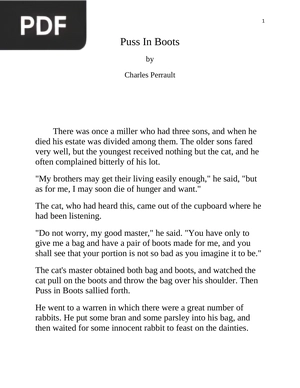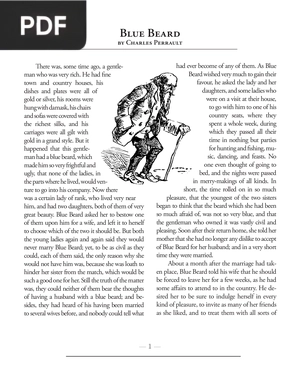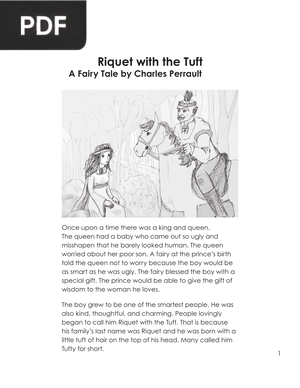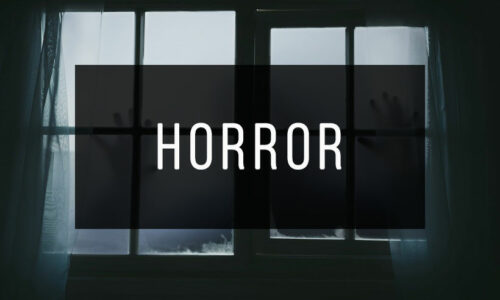Cinderella or the Little Glass
Author: Charles Perrault
*Wait a few seconds for the document to load, the time may vary depending on your internet connection. If you prefer, you can download the file by clicking on the link below.
Information
Description: <p><strong>Cinderella</strong> is one of the French writer's most popular and well-known fairy tales.</p> <p>Once upon a time there was a beautiful and kind-hearted young girl named Cinderella, who was forced by her cruel stepmother and her two stepsisters to perform the hardest jobs in the palace, as if she were the last of the maids.</p> <p>On the day of the ball called by the prince, Cinderella's fairy godmother appeared to help her attend the event. With her beauty she made the prince fall in love, but her appearance and her beautiful dress, granted by the fairy, would only last until midnight. Cinderella flees from the prince's side to prevent him from seeing her real appearance. But the prince does not rest until he finds her and makes her his wife.</p>
Pages: 7
Megabytes: 0.33 MB
This may interest you
Puss In Boots
Extension: PDF | 5 pages
<p><strong>Puss in Boots</strong> is an Italian and later European literary fairy tale about an anthropomorphic cat who uses tricks to gain power, wealth, and the hand of a princess in marriage for his poor and helpless master.</p> <p>The earliest tale is by the Italian author Giovanni Francesco Straparola, who included it in The Facetious Nights of Straparola (c. 1550-1553) in the 14th and 15th centuries. Another version was published in 1634 by Giambattista Basile under the title Cagliuso, and Charles Perrault (1628-1703), a retired civil servant and member of the French Academy, wrote a tale in French in the late 17th century.</p> <p>The tale appeared in an illustrated manuscript two years before its publication in 1697 by Barbin in a collection of eight fairy tales by Perrault called Histoires ou contes du temps passé. The book was an immediate success and remains popular.</p>
Beauty and the Beast
Extension: PDF | 5 pages
<p>Let's keep in mind that many of Charles Perrault's tales are retellings of other stories, one of which is <strong>Beauty and the Beast</strong>, which although it has been adapted many times over the years, Perrault's version remains one of the most influential.</p> <p>Beauty is a beautiful young girl who is also polite and charming, so she is much courted by the gentlemen of the town. One day her beloved father gets lost in the forest and stumbles upon a mysterious castle where a Beast lives, so Beauty decides to give her life, in exchange for her father's, with the intention of saving him. But something unthinkable happens...</p> <p>The moral of this fairy tale is that we should value the inner qualities of people, such as kindness and goodness, above superficial characteristics such as appearance.</p>
Blue Beard
Extension: PDF | 4 pages
<p><strong>Blue Beard</strong> is a French folk tale, the most famous remaining version of which was written by Charles Perrault and first published by Barbin in Paris in 1697 in Histoires ou contes du temps passé.</p> <p>The tale tells the story of a rich man with a habit of murdering his wives and the attempts of one of them to avoid the fate of her predecessors.</p> <p>«The White Dove», «The Robber Bridegroom» and «Fitcher's Bird» (also called «Fowler's Fowl») are tales similar to «Bluebeard». The notoriety of the tale is such that Merriam-Webster gives the word «Bluebeard» the definition of «a man who marries and kills one wife after another», and the verb «bluebearding» has even appeared as a way of describing the crime for killing a series of women, or for seducing and abandoning a series of women.</p>
Riquet with the Tuft
Extension: PDF | 4 pages
<p>In Charles Perrault's version, a fairy gives an ugly prince named Riquet (or Ricky) the gift of conferring wit to the person he loves most.</p> <p>Prince <strong>Riquet with the Tuft</strong> arrives in a kingdom with two princesses. The older one is beautiful but not very smart and the younger one is smart but ugly. The older princess is saddened that her ugly but intelligent sister gets more attention than she does, but all that will change and so will the lives of everyone in the kingdom.</p>
The Ridiculous Wishes
Extension: PDF | 1 pages
<p><strong>The Ridiculous Wishes</strong> is a fairy tale published in 1697 in a volume entitled «Mother Goose Tales».</p> <p>A woodcutter complained about his bad luck. Jupiter (or, failing that, a tree spirit) granted him three wishes. The woodcutter returned home and his wife persuaded him to postpone the wish until the next day, after he had thought about it, but while sitting by the fire, he wished for sausages. His wife taxed him for his folly and, in anger, he wished for sausages on her nose. Finally, they agreed to use the last wish to remove the sausages off her nose, leaving them no better than before.</p> <p>In some types of versions of this tale, black pudding is used instead of sausages.</p>











































